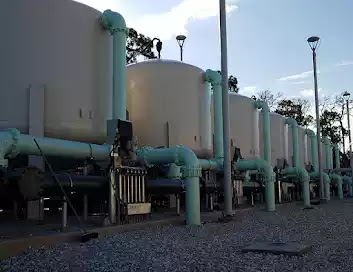Demin Water and Ion Replace
The water is passed through an ion exchange resin that removes the minerals by exchanging them for other ions. This process can be used to remove hardness from water or to remove specific ions such as sodium, nitrate, or chloride.
What is demineralized water?
Demineralization water is water that has had its minerals removed. The process of demineralization can be achieved through several methods, but the most common is through ion exchange. In ion exchange, water molecules are passed through a resin that exchanges the ions in the water for ions of another substance, typically a salt. This process removes minerals from the water, leaving it demineralized.
There are several reasons why someone might want to demineralize water. In some cases, the presence of minerals can make water unsuitable for certain uses, such as in boiler systems where mineral buildup can cause problems. In other cases, demineralized water may be desired for its purity or because it has a more neutral taste than mineralized water.
If you're considering demineralizing your water, ion exchange is generally the most effective and efficient method. However, it's important to note that demineralized water can be more corrosive than mineralized water and so it's important to take appropriate precautions if using it in systems where corrosion could be an issue.
What are the benefits of the demineralization of water?
There are many benefits of the demineralization of water, including the removal of dissolved minerals from water. This can result in water that is purer and less likely to cause problems with plumbing or Scale. Additionally, demineralization can increase the lifespan of appliances that use water, such as water heaters and dishwashers.
How does the demineralization of water work?
Water demineralization is a process where minerals are removed from the water. This can be done using a water ion exchange system. In this system, water is passed through a resin bed. The resin beads have a negative charge and attract the positive ions in the water. The ions are then exchanged for hydrogen or hydroxide ions, which are less harmful to the body Ion exchange is the most common type of demineralization water system. It works by exchanging ions in the water with ions from a resin. The advantage of this system is that it's relatively inexpensive and easy to maintain. However, it can't remove all impurities from the water, and the resin will eventually need to be replaced.
Reverse osmosis
Reverse osmosis is a more effective way to remove impurities than ion exchange, but it's also more expensive. In addition, reverse osmosis systems require regular maintenance, and the water they produce may have a slightly salty taste.
Deionization
Deionization is another option for removing impurities from water. This system uses an ion-exchange process to remove minerals from the water. The advantage of deionization is that it produces high-quality water that doesn't have a salty taste. However, deionization
Conclusion
Overall, demineralization of water ion exchange is an effective way to remove minerals from water. However, it is important to note that this process is not perfect and there are still some residual minerals present in the water after treatment. Additionally, this method is more expensive than other methods of water treatment such as reverse osmosis.

